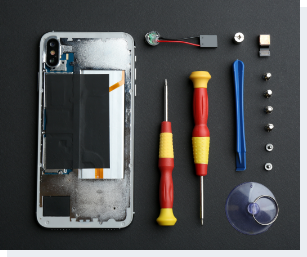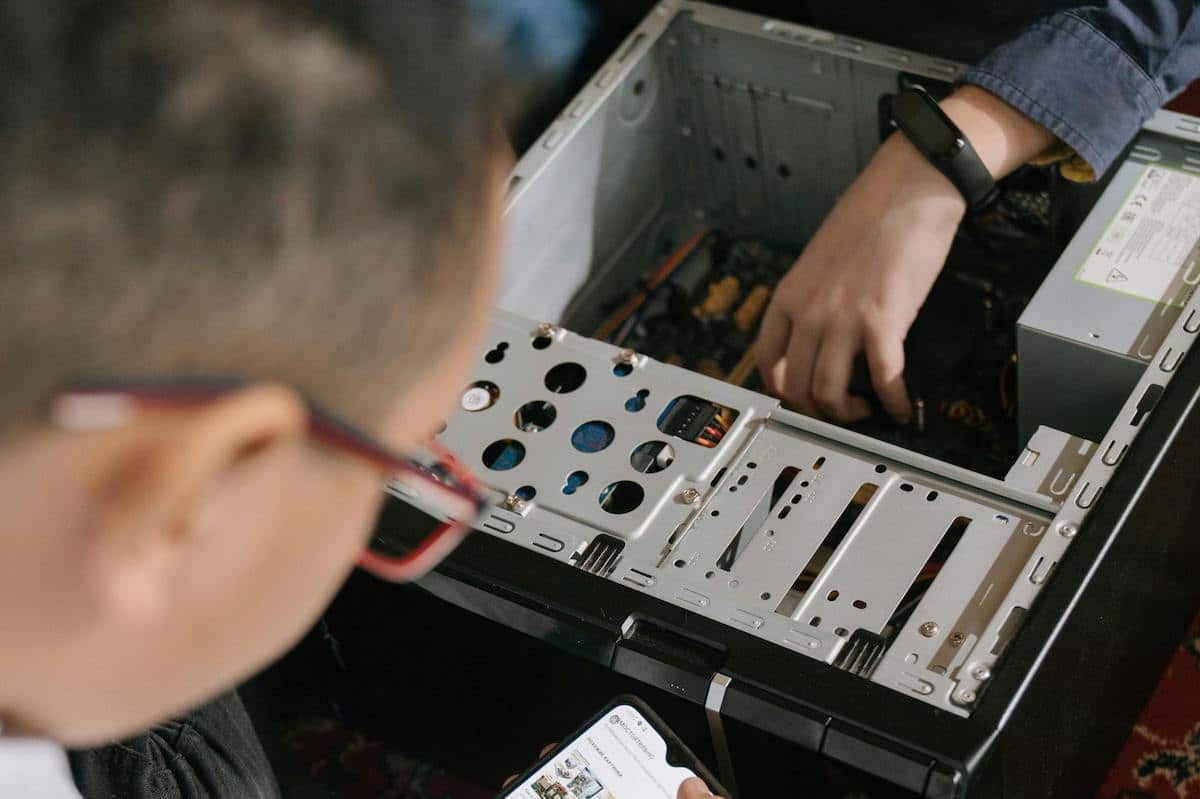As global markets react to the swift spread of COVID-19 (Coronavirus 2019), it is important that repair businesses assess the situation honestly and rationally. Several of our customers are asking themselves, how will this disruption affect my business? It is possible, however, to anticipate the implications to day-to-day repair business operations and how this disease might impact our communities. By looking at our internal network data, customer patterns, and historical pandemic impact, we provide some perspective on the implications to day-to-day repair business operations and recommendations on how to minimize the disruption.
Impact to the Supply Chain
The supply chain for electronics is complicated. Routinely, parts from at least 6 different manufacturers can be found in the latest smartphone. In fact, this year’s Samsung Galaxy S20 Teardown featured semiconductors produced in at least 3 different countries including the United States, South Korea, and China.
In terms of the aftermarket parts landscape, the picture is no different. Aftermarket parts manufacturers like Injured Gadgets and MobileSentrix invest in overseas manufacturing to diversify supply chains and protect against market-specific impacts such as public holidays, political turmoil, and natural disasters. Ahead of forecasted events, these suppliers will work months in advance to boost manufacturing in order to ensure a healthy supply during the potential down-period. However, forecasting against a pandemic can be problematic. For one, overcompensation for market disruption can lead to a supply surplus that ties up valuable resources otherwise dedicated to advancing technology that could provide a competitive edge. Most suppliers instead boost stock based on market trends and internal data to accommodate 2-3 months of supply. Seemingly,such preparation well positions the supplier-side of the industry to be able to handle temporary interruptions to the manufacturing chain.
Less clear is what an ongoing disruption would mean to suppliers themselves. After COVID-19 began to ramp up, China took the unprecedented step of locking down an entire city with millions of people in an effort to contain the virus. As the situation escalated, the government took further action by resorting to “mitigation” techniques. This meant discouraging large gatherings, closing businesses, and reducing unnecessary outdoor exposure. The most important manufacturing region in the world effectively came to a standstill unexpectedly and, almost overnight. This meant that although suppliers had boosted stock in their warehouses ahead of the outbreak and market closures, there was still a shortage of staff to package and ship the inventory. Also affected were quality control teams who were used to working closely with one another, the inventory, and business partners to get the job done.
China’s handling of the pandemic and its impact on the industry may be a sign of what’s to come. As previously mentioned, the manufacturing landscape has scaled rapidly over the last decade and, in an effort to hedge their bets, many electronics device and parts manufacturers shifted supply chains away from traditional marketplaces like China and into developing economies such as South Korea, India, and beyond. As the virus spreads to more countries, so do the impacts to the supply-chain with increasing closures of businesses through mitigation techniques. At its current rate of spread, it’s likely that these closures and impacts will peak around mid-March. Although this suggests that the spring will be better in this regard, it should be noted that reintroducing workers to shuttered plants may necessitate a long-term approach to avoid any flare-ups in infections that could further setback production efforts. Like we said, it’s complicated.
Some key suppliers in the repair industry have already seen an impact to their operations with key team members tied up in quarantined areas and import sales decreasing by double-digits. Some repair shops, too, are reporting impacts to their parts supply and the quality of parts they are receiving. Such constraints are forcing them to turn to unconventional suppliers who may produce sub-par quality components like those found on major online eCommerce websites. In summary, we believe suppliers and businesses alike should brace for a major effect on manufacturing worldwide. It will likely hit hardest in the coming two to three weeks and could conceivably last for months.

For Repair and Service Businesses
The novel coronavirus threatens the global economy and the decade-long bull market has officially come to an end. Our economic growth has become more dependent than ever on sustaining both consumer confidence (through spending) and manufacturing output. As the machine that propels the economy becomes more at-risk, consumers tend to retreat to safer assets and tighten their spending. Few businesses grow in a down economy—but repair generally does! In a down economy, consumers search for ways to make the stuff they own, last longer and that’s not only great for the environment, it’s also great for the local economy. Also, repair jobs are generally not offshorable. These jobs require skilled labor and are well paid. They are also in continually high demand and at low risk for being transferred overseas where there are fewer labor restrictions and workers with lower wage expectations.
The repair industry has experienced strong growth in the past decade thanks to increased adoption of electronics and mobile data networks. This is especially true in the phone repair space. According to IBISWorld Industry Analyst Sarah Kahn, “The rising popularity of expensive damage-prone smartphones gave the industry a significant boost.” Consequently, the industry represents a projected $4.2 billion dollars in annualized revenue by 2024 to the U.S. gross domestic production and is considered to be an emerging economic factor due to the importance the space holds within the global economy.
As fixers, we’re constantly in a “state of war” with the second law of thermodynamics. Resiliency is in our blood and that’s served our industry well over the last 5 years. The potential impact a COVID-19 outbreak could have on business is challenging that tenacity. The threat is two-fold. From one direction, businesses are threatened by a decreased supply of essential materials and, from the other direction, the threat of uncontrolled viral spread could keep consumers out of stores.Advance preparation and a planned response strategy are critical for repair businesses to weather the storm.
Smartphones have grown in the last decade to become more important than ever in the lives of the everyday consumer. These devices are more expensive than more basic-feature phones and are therefore more likely to be repaired rather than replaced. These devices represent more than ⅔ of all phone sales and more than half of all mobile phone users. The rapid acceleration of smartphone use in local economies has created a need for more cell phone repair businesses to keep up with the growing market demand. As a result, according to iFixit, the number of cell phone repair shops has grown to encompass over 30,000 businesses. Since 2015, many repair shops have diversified their core offering from being a simple “part-swapper” to providing more robust services including board level repair, accessory sales, and refurbished device sales. These methods have yielded positive revenue changes while increasing overall profitability. In periods of supply uncertainty, as with now, it also has the added benefit of mitigating the impact a temporary disruption could cause.
Service and maintenance businesses should consider deeper investments in these areas while also adding services that continue to differentiate from more traditional approaches. Companies like CPR Cell Phone Repair, StayMobile, etc. are introducing advanced in-home and on-demand care that provides consumers with an option to receive service wherever they need it. Being able to provide repair in a home, office, or public area and not exclusively at a brick & mortar location allows shops to provide a more well-rounded experience that further strengthens the relationship with consumers.
For Consumers
The economy traditionally thrives through the buying and selling of goods and services. As the global market stares down a possible recession and economic panic sets in, consumers would do well to reflect on the practices that saw us through downturns of the past. During the Great Recession of 2008, we made up for the economic slowdown by making do with what we had and turning to providers for more maintenance-oriented services instead of new device replacement. Data from the last few years since that period of economic turmoil shows that we’re rightfully continuing that trend. However, as communities rely on mitigation techniques that encourage working from home and reducing public interaction many of the services that facilitate making equipment last longer won’t continue to be offered. Similarly, as manufacturing comes to a halt, goods may be in short supply. Things that would have otherwise been offered as a service, created, or available for purchase won’t be.
Due to these issues and lack of traffic to brick and mortar stores during the lockdown, smartphone sales are expected to decline by over 20% in China for Q1 2020, compared with a 5% drop globally, according to Counterpoint Research
Focusing on making what we have last longer is a critical first-step in protecting against the impact that may otherwise be felt. Committing to recycle and reuse our electronics, including encouraging our friends and family to do the same, will help limit the disruption in our lives..
Conclusion
The nature of COVID-19 and traditional best-practices to control and mitigate its spread will cause disruptions to the supply chain of essential goods and the providing of associated services, impacting the repair industry. Additionally, consumer confidence may be disrupted.
Best Practices to Keep in Mind
|
(A version of this article was published on Medium.)






